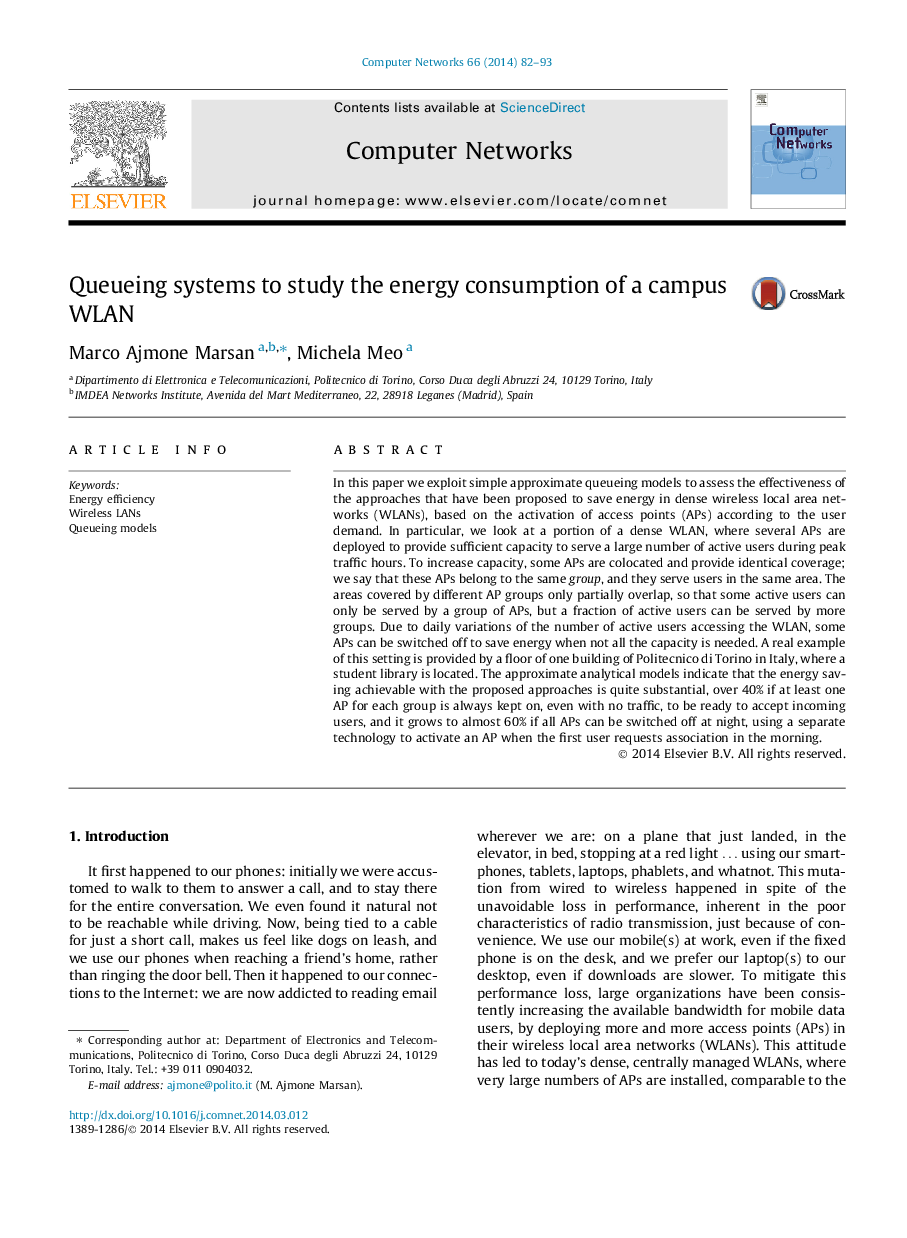| Article ID | Journal | Published Year | Pages | File Type |
|---|---|---|---|---|
| 451776 | Computer Networks | 2014 | 12 Pages |
In this paper we exploit simple approximate queueing models to assess the effectiveness of the approaches that have been proposed to save energy in dense wireless local area networks (WLANs), based on the activation of access points (APs) according to the user demand. In particular, we look at a portion of a dense WLAN, where several APs are deployed to provide sufficient capacity to serve a large number of active users during peak traffic hours. To increase capacity, some APs are colocated and provide identical coverage; we say that these APs belong to the same group, and they serve users in the same area. The areas covered by different AP groups only partially overlap, so that some active users can only be served by a group of APs, but a fraction of active users can be served by more groups. Due to daily variations of the number of active users accessing the WLAN, some APs can be switched off to save energy when not all the capacity is needed. A real example of this setting is provided by a floor of one building of Politecnico di Torino in Italy, where a student library is located. The approximate analytical models indicate that the energy saving achievable with the proposed approaches is quite substantial, over 40% if at least one AP for each group is always kept on, even with no traffic, to be ready to accept incoming users, and it grows to almost 60% if all APs can be switched off at night, using a separate technology to activate an AP when the first user requests association in the morning.
